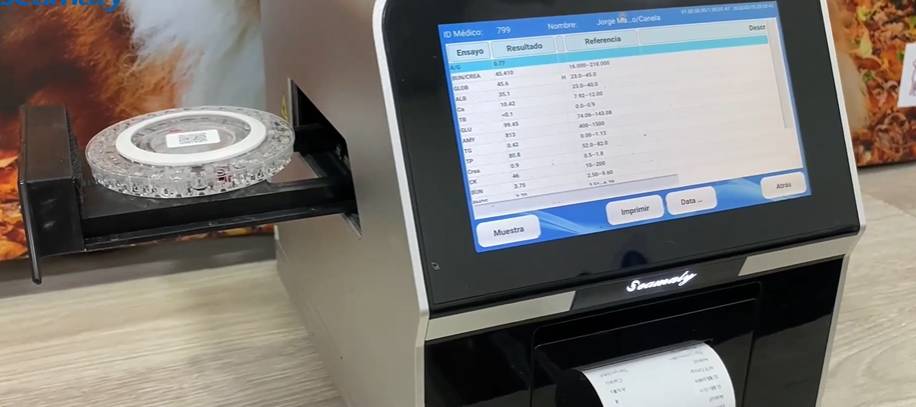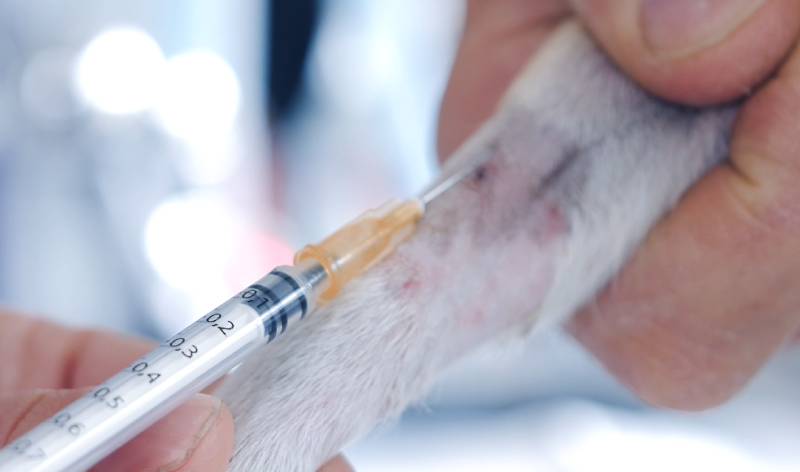release time:2021-04-22 09:03:09
The lipemia and jaundice in pet test samples are more common, and these are mostly caused by the pet's physical condition. It is basically difficult to avoid these problems. Therefore, among the blood samples collected by veterinarians, abnormal samples account for a relatively large proportion.
So what should we do when we encounter these problems like lipemia, hemolysis, jaundice, coagulation, etc during blood collection? Here are some solutions that may help you to deal with them.
It's difficult to tell the sample is normal or not when it is whole blood. (more severe hemolysis and lipemia can be distinguished in the state of whole blood). Generally, it is necessary to add whole blood into an anticoagulation tube for centrifugation, observe the plasma stratification, and then perform corresponding treatments according to different abnormal samples.
Definition: Hemolysis is the destruction of red blood cells.
The picture above shows a sample of hemolysis. The plasma centrifuged from whole blood is reddish to deep red.
The production of hemolysis samples is
mostly caused by the excessively long time of sample placement, improper blood
collection, difficulty in blood collection, and mechanical shock. There are
fewer cases of hemolysis or pathological hemolysis in the blood vessels of
animals.
Common clinical causes of hemolysis in vitro: such as hypotonic solution, mechanical strong vibration, rapid low temperature freezing (-20℃) or thawing, as well as alcohol, ether, etc. can cause hemolysis
(1)Sample hemolysis almost affects the accuracy of all biochemical test results. The destruction of blood cells will lead to the release of components in the cells. The escape of these components will undoubtedly affect the concentration of the components in the plasma and change the results of the determination. The changes in the concentration of enzymes after hemolysis of the specimens are extremely significant, and the requirements of enzymes on the specimens are higher than those for other biochemical testing purposes. Therefore, it is not suitable to measure enzymes after hemolysis in daily work.
(2)When hemolysis occurs, red blood cells rupture. High concentrations of intracellular substances such as AST (aspartate aminotransferase), LDH (lactate dehydrogenase), potassium, etc. enter the serum, increasing the concentration of the corresponding substances in the serum, leading to high biochemical test results.
(3)Hemoglobin itself interferes with absorbance. After the intracellular hemoglobin enters the serum, it affects the biochemical test results by affecting the absorbance. For example, when measuring total protein, hemoglobin will increase the absorbance of the reaction, which will increase the result of the total protein test.
In addition, certain red blood cell components can also interfere with biochemical reactions. For example, when serum CK (Creatine kinase) is measured, red blood cells contain adenylate kinase (AK), and the catalytically produced ATP leads to an increase in CK activity, causing high test results. In addition, organophosphates and non-sugar reducing substances in red blood cells will also interfere with the detection of biochemical items.
Slightly hemolysis samples will not affect the test result. Severely hemolysis test results are for reference only, or re-sampling to avoid manual manipulation to cause hemolysis.
Definition:The lipid content enters the blood, making the serum or plasma turbid and milky white.
Compared with hemolysis and jaundice, lipemia samples are more likely to occur, and they are mostly found in the blood of obese pets, such as Alaska, Husky, and Samoyed. And within a few hours after the animal eats, triglycerides in the blood rise significantly.
The chylomicrons in the lipemia sample will cause spectral scattering in the wet biochemical test, thereby affecting the absorbance.
A slight lipemia sample will not affect the test. For more severe lipemia samples, more blood can be drawn appropriately, centrifuged with a high-speed centrifuge (>10000 rpm), and then the clearer lower layer of plasma sample is centrifuged again and repeated several times until a clearer plasma sample can be obtained. The test result for reference only.
Jaundice is a condition in which the skin, whites of the eyes, and mucous membranes turn yellow because of a high level of bilirubin, a yellow-orange bile pigment.
Causes of jaundice samples:
There is a correlation between the jaundice sample and the hemolysis sample, such as hemolytic jaundice, the sample shows a reddish and yellowish state. If the test result is severely abnormal, the blood can only be drawn again, centrifuged to dilute the plasma, and the test result is for reference only.
The jaundice sample will cause the background absorbance to increase, which will interfere with the test results. First of all, bilirubin itself is a reducing agent, which can neutralize the oxidizing components or intermediate reactants in the reagent, resulting in insufficient reagent or consumption of intermediate products.
Treatment method: mild jaundice samples will not affect the test, and the test results of severe jaundice samples are for reference only, or the test will be performed after the case is treated.
Coagulation: In the state of whole blood, improper blood draw, or too long storage time, the blood clotting factor is activated, causing the blood to be in a clotting state when it is added to the reagent plate.
Thrombosis: The function of elderly animals is decreased, the pumping function of the heart is weakened, the blood flow in the blood vessels is slowed, the blood cells are reduced, the blood drawn is thick, and it is easy to form blood clots and thrombus.
Then it is necessary to centrifuge the blood to use the plasma test or to draw the blood again and centrifuge to use the plasma test.
Reminder: This article is for reference only. If you encounter an abnormal sample that cannot be handled, you still need to consult the manufacturer of the biochemical analyzer for after-sales service.

2021-06-08
Animal biochemical diagnosis refers to the detection of animal enzymes, lipids, liver function, blood sugar, inorganic elements, protein and non-protein nitrogen through chemical reactions involving enzyme reactions. There are even some brands that have their own unique special test items. Each has its own advantages. When purchasing animal biochemical analyzers, you can combine them. Consider your own demands and actual needs.

2021-04-21
Pet biochemical test is an indispensable tool for veterinarians to diagnose diseases, but there are many factors that affect the accuracy of the results. This article summarizes some influencing factors.

2021-04-20
The ammonia produced by the catabolism of various amino acids in various tissues in the body and the ammonia absorbed from the intestinal tube enter the blood to form blood ammonia. Precautions for detecting blood ammonia